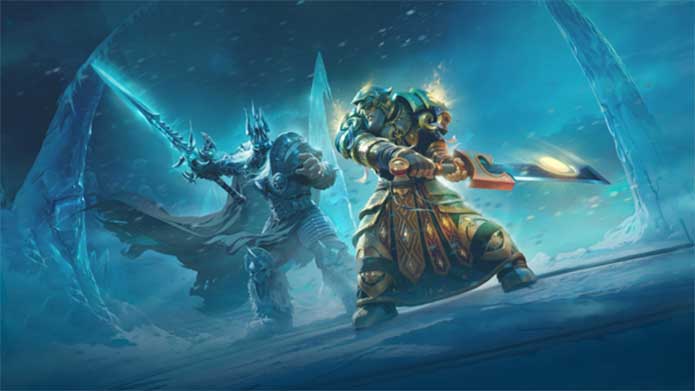Multiplayer gaming has transformed dramatically over the years. What began with friends hauling bulky PCs to living rooms has grown into a global phenomenon where millions connect online daily. For long-time World of Warcraft (WoW) players, who’ve spent years adventuring together, this evolution feels personal.
This article explores how multiplayer gaming began, how it’s changed, and where it’s headed, especially for players who’ve lived through every stage.
LAN Gaming: Where Multiplayer Began
Before online servers, multiplayer meant being in the same room. LAN (Local Area Network) parties were the heart of early gaming culture. Games like Quake and Counter-Strike were popular because they allowed players to face off in real time. The atmosphere was electric—friends side by side, sharing screens, laughs, and intense matches.
LAN parties thrived on both competition and teamwork. Whether battling head-to-head or teaming up, players relied on direct, in-person communication or offering fast tips. This real-time interaction built friendships and gaming memories that lasted long after the PCs were packed away.
The Internet Unlocks New Possibilities
 Broadband internet changed everything. Suddenly, you didn’t need to be in the same house—or even the same country—to play together. Online servers opened the doors to persistent worlds and massive communities.
Broadband internet changed everything. Suddenly, you didn’t need to be in the same house—or even the same country—to play together. Online servers opened the doors to persistent worlds and massive communities.
World of Warcraft became a perfect example, drawing in players who wanted deep stories, team-based gameplay, and a sense of shared adventure.
As multiplayer games became more advanced, many began using reward systems similar, click here, where features like free spins keep players engaged and coming back. Games introduced daily bonuses, seasonal events, and progress systems to build the same kind of long-term interest.
Matchmaking and voice chat made it easier to find teammates and play together. Early tools like Ventrilo and Teamspeak helped, but Discord made everything easier with both voice and text in one place.
These tools didn’t just improve gameplay—they helped players build friendships and communities, even with people they’d never met.
Streaming and eSports Bring Multiplayer to the Masses
 As internet speeds improved, streaming platforms like Twitch made it easy for anyone to follow their favorite games. Multiplayer titles turned into spectator sports, and players into entertainers. At the same time, competitive gaming—or eSports—exploded in popularity.
As internet speeds improved, streaming platforms like Twitch made it easy for anyone to follow their favorite games. Multiplayer titles turned into spectator sports, and players into entertainers. At the same time, competitive gaming—or eSports—exploded in popularity.
For WoW players, this meant watching raid strategies unfold live, learning from top-tier players, or even streaming their own dungeon runs. Long before live streaming became widespread, players were already sharing knowledge through community guides like Jame’s Horde Leveling Guide, helping others navigate complex zones and progress efficiently.
Streaming gave rise to gaming personalities and added a new social layer. Viewers weren’t just watching—they connected with the streamers’ humor, insights, and communities. Multiplayer gaming became something to experience, even without a controller in hand.
The Era of Cloud Gaming and Cross-Play
 Today, multiplayer games are more accessible than ever. Cloud gaming platforms allow people to stream high-end games on basic devices. Whether you’re using a phone or an old laptop, you can still join your friends in complex online worlds—so long as your internet holds up.
Today, multiplayer games are more accessible than ever. Cloud gaming platforms allow people to stream high-end games on basic devices. Whether you’re using a phone or an old laptop, you can still join your friends in complex online worlds—so long as your internet holds up.
Cross-platform play has also removed barriers. Now, console, PC, and mobile players can all meet in the same virtual space. This has made communities broader, stronger, and more welcoming.
Cloud gaming lets you play from almost any device by streaming the game from remote servers, like how Netflix streams movies. It means you don’t need expensive hardware—just a good internet connection. It’s great for new players and gives experienced ones more freedom. As faster internet like 5G and fiber spreads, even more people will be able to join in.
What’s Next for Multiplayer Gaming?
 The future looks even more immersive. Virtual reality is inching closer to mainstream adoption, and AI is helping developers build smarter, more dynamic game worlds. These tools may shape multiplayer games into spaces that feel more alive and reactive.
The future looks even more immersive. Virtual reality is inching closer to mainstream adoption, and AI is helping developers build smarter, more dynamic game worlds. These tools may shape multiplayer games into spaces that feel more alive and reactive.
The next evolution could mean more personalized characters, smarter dungeon mechanics, or even fully interactive group quests. As always, the heart of multiplayer gaming will remain the same: connection.
Conclusion
Multiplayer gaming has grown from basement LAN parties to high-speed cloud-powered experiences. Each phase of its journey has brought people closer together, no matter the distance.
For players who’ve explored dungeons or joined friends across continents, this evolution isn’t just technological—it’s deeply personal. And as the next generation of multiplayer gaming unfolds, one thing stays true: it’s all about sharing the adventure.


 by Symphonie
by Symphonie